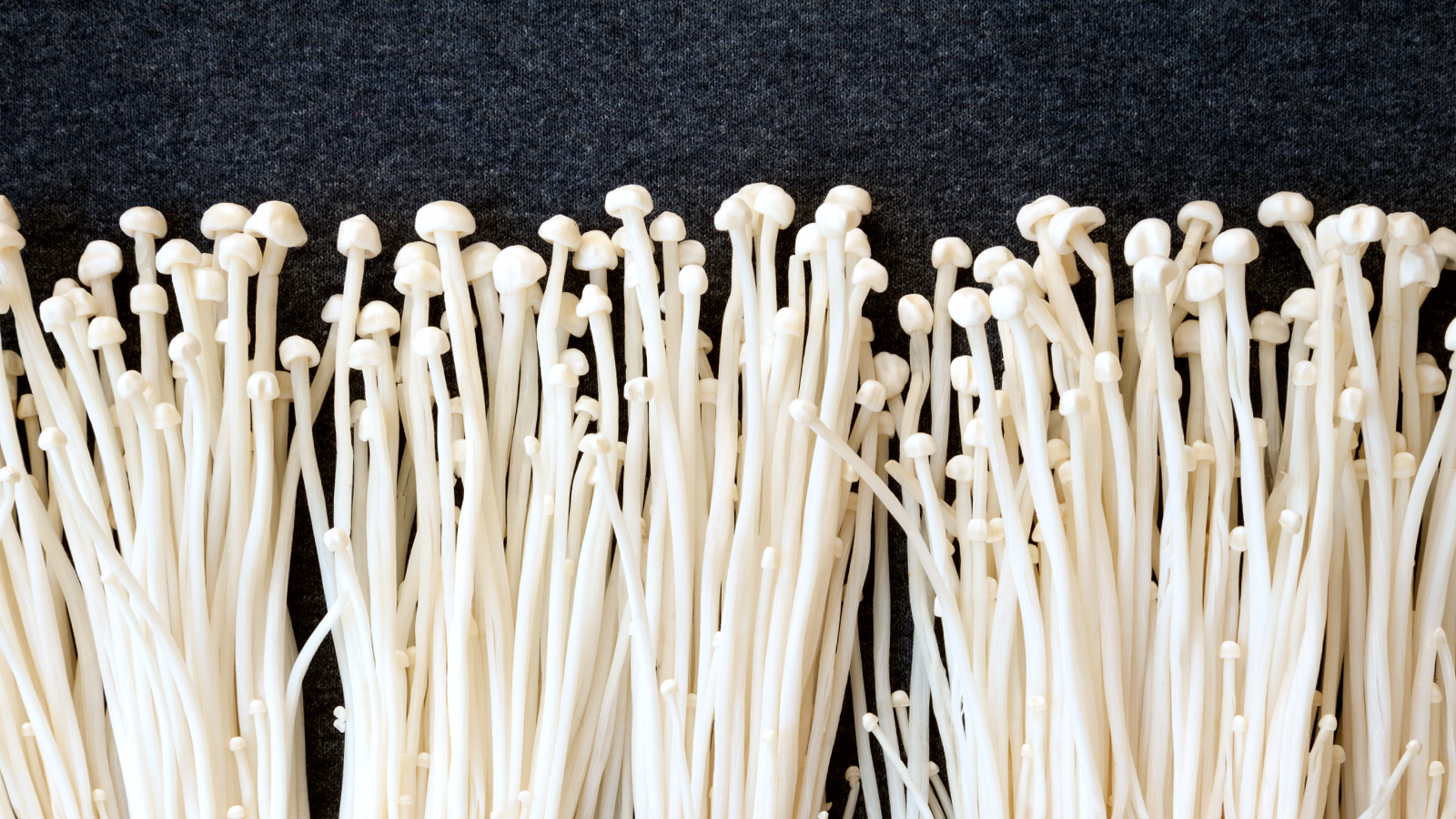Summary of FDA’s Strategy to Help Prevent Listeriosis and Salmonellosis Outbreaks Associated with Imported Enoki and Imported Wood Ear Mushrooms
FDA Prevention Strategies to Enhance Food Safety main page
Certain specialty mushrooms are popular commodities in Japanese, Chinese, and Korean cuisines. One such mushroom is enoki—also known as an enokitake, golden needle, futu, or lily mushroom. These long, thin, white mushrooms have a mild flavor and crunchy texture and are used in soups, stir-fries, hot pots, salads, and other dishes. Another variety, wood ear mushrooms (also known as jelly ears), are known for their crunchy texture and ability to soak in flavors, making them a frequently found ingredient in hot and sour soup, as well as Chinese stir-fry. Many of these specialty mushrooms are imported into the United States from Japan, China, the Republic of Korea (ROK), and Canada.
Overview of Listeriosis and Salmonellosis Outbreaks in Imported Enoki and Wood Ear Mushroom Products
In 2020, the FDA’s Coordinated Outbreak Response & Evaluation (CORE) Network, in collaboration with the Centers for Disease Control and Prevention (CDC) and state and local partners, investigated a multistate outbreak of Listeria monocytogenes (L. monocytogenes) infections linked to the consumption of imported enoki mushrooms that sickened 26 people. Testing conducted by the California Department of Public Health (CDPH) identified a matching strain of L. monocytogenes in enoki mushrooms from the Republic of Korea. The outbreak resulted in 4 deaths and 31 hospitalizations and cost an estimated $127 million in consumer health-related losses.[1]
Also in 2020, CORE, in collaboration with the CDC and state and local partners, investigated a multistate outbreak of Salmonella Stanley infections linked to the consumption of imported wood ear mushrooms. A total of 55 salmonellosis illnesses were reported in 12 states. Testing conducted by CDPH identified a matching strain in a sample of imported wood ear mushrooms from China. The outbreak resulted in 6 hospitalizations in the United States and cost an estimated $10 million in consumer health-related losses.[1]
Prior to these outbreaks, the FDA was not aware of outbreaks linked to imported enoki and wood ear mushrooms reported in the last 20 years.
Due to COVID-19 travel restrictions, the FDA was not able to conduct an onsite investigation at the implicated producer of enoki mushrooms in the ROK or the implicated producer of wood ear mushrooms in China. However, these producers were placed on import alert to help prevent further exports of these potentially violative mushrooms from entering the U.S. until the producers could assure the FDA that the conditions that gave rise to the appearance of the violations were resolved.
Summary of FDA’s Strategy to Help Prevent Future Outbreaks linked to Imported Enoki and Wood Ear Mushrooms[2]
Food safety is a shared responsibility. The specialty mushroom industry is responsible for meeting applicable food safety requirements. In addition, the FDA believes it is imperative that we share data, knowledge, and information, and work collaboratively to enhance food safety and advance the goals and objectives of FDA’s Strategy for the Safety of Imported Food. Based on review of the outbreak findings, historical data, and engagements with industry and other stakeholders, the agency has identified measures that can be taken to reduce future incidences of foodborne illness related to imported enoki and wood ear mushrooms, including:
- Ensuring exporting firms and competent authorities are aware of the applicable Produce Safety Rule requirements for specialty mushrooms and the potential cultural differences associated with consumption of raw specialty mushrooms.
- Engaging food safety authorities in the ROK, China, Canada, and Japan to better understand the potential sources of contamination in enoki and wood ear mushrooms and what producers are doing to prevent contamination of these mushrooms.
- Conducting research to better understand how L. monocytogenes contaminates enoki mushrooms.
- Conducting research to better understand the survival of L. monocytogenes and Salmonella on enoki mushrooms and wood ear mushrooms.
- Increasing strategic and targeted FDA sampling of imported specialty mushrooms at U.S. ports of entry. When FDA optimizes its border surveillance by targeting the highest-risk products for sampling at a port of entry, a shipment positive for pathogens may be prevented from entering domestic commerce. Additionally, when specific producers are linked to the contaminated shipment, FDA may also detain future shipments until the producer can assure the FDA that the conditions that gave rise to the appearance of the violation have been resolved.
- Increasing state sampling of specialty mushrooms at retail operations in the U.S. This could result in potentially contaminated products being recalled and removed from the market.
- Working with industry to ensure international specialty mushroom producers have access to training intended to help them meet requirements for ensuring the safe production of mushrooms for import into the U.S.
By implementing these activities, the FDA hopes to:
- Ensure that the mushroom industry, specifically those exporting specialty mushrooms to the United States, is aware of produce safety regulatory requirements applicable to growing, harvesting, packing, and holding of mushrooms.
- Verify through sampling that the industry is effectively implementing practices that will minimize the likelihood of contaminated product being offered for sale within the U.S.
- Encourage and support research efforts to broaden the body of scientific knowledge about measures that can be taken to reduce future incidences of foodborne illness related to specialty mushrooms.
- Better understand routes of contamination and promote awareness of best practices to minimize contamination.
[1] The estimated consumer health losses were calculated using information and methods in the following documents:
Minor, T., Lasher, A., Klontz, K., Brown, B., Nardinelli, C. and Zorn, D. (2015), The Per Case and Total Annual Costs of Foodborne Illness in the United States. Risk Analysis, 35: 1125-1139. https://doi.org/10.1111/risa.12316
Scallan E, Hoekstra RM, Angulo FJ, Tauxe RV, Widdowson M-A, Roy SL, et al. Foodborne illness acquired in the United States—major pathogens. Emerg Infect Dis [serial on the Internet]. 2011 Jan [date cited]. http://dx.doi.org/10.3201/eid1701.P11101
[2] FDA started developing these strategies in August 2020 and began implementing these strategies in May 2021.

